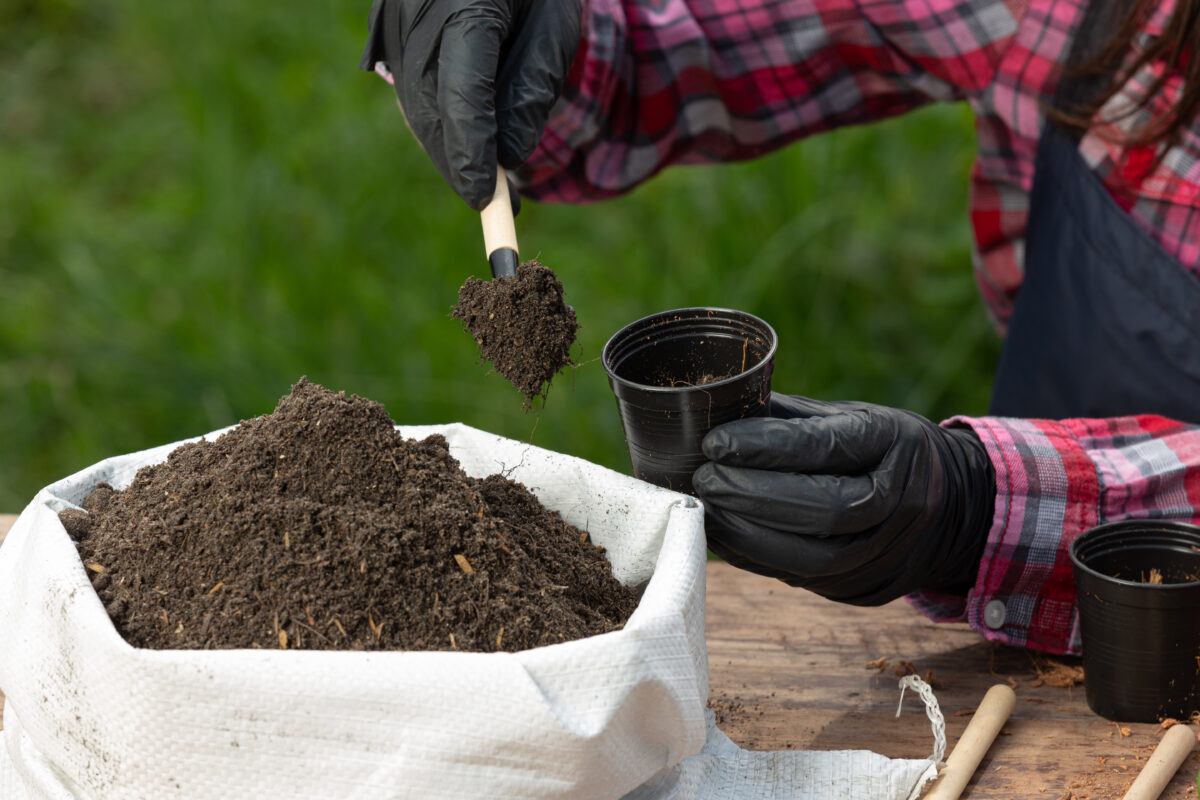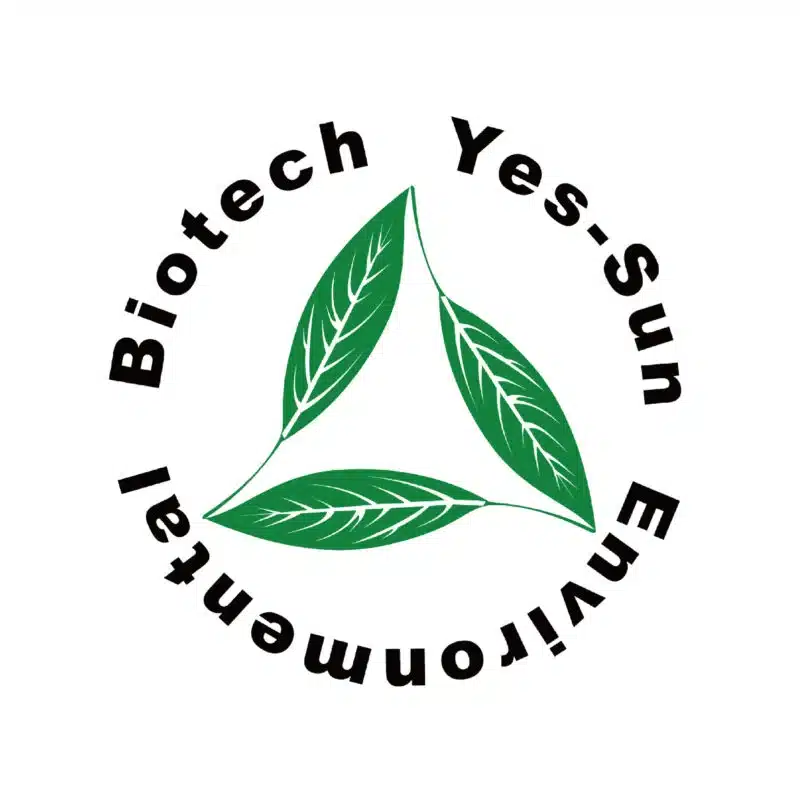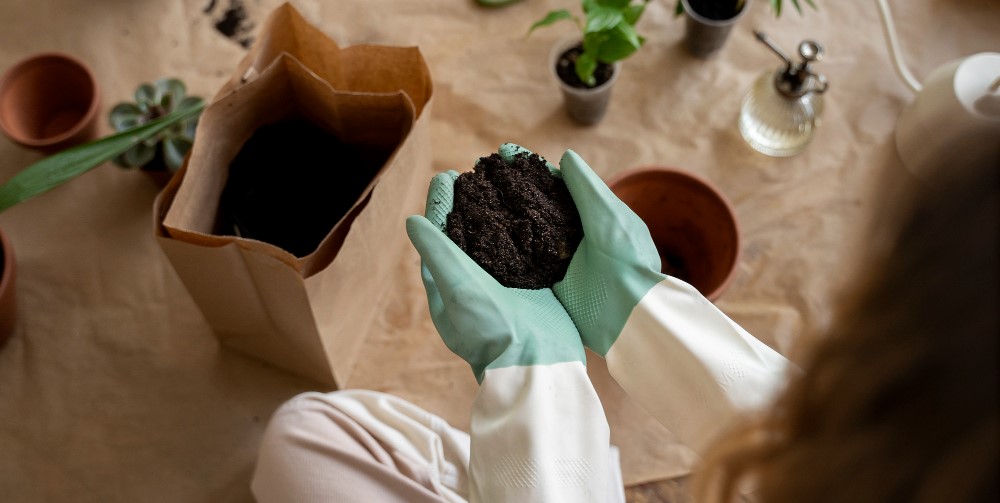Homemade Organic Fertilizer

Creating your own organic plant food is a simple and enjoyable process. It is widely recognized that composting is the best method to improve garden soil quality. Many commercial plant fertilizers available at local garden centers contain chemicals that can be harmful to plants and the environment. Unfortunately, a significant amount of organic waste is often discarded in regular trash or garbage disposals, resulting in unnecessary waste. However, these materials can be transformed into something incredibly useful: fertilizer.
Organic waste consists of organic matter that can be effectively composted to produce fertilizer. This approach provides an efficient and environmentally friendly solution for disposing of organic waste that would otherwise end up in the garbage. By utilizing leftover food scraps and other organic waste, you can convert these materials into a nutrient-rich organic product that can be used to cultivate a variety of plants, including vegetables and flowers. Creating your own homemade organic fertilizer is not only easy and cost-effective but also allows you to utilize resources that are already available in your home.
Organic material from leftover food and grass clippings to organic DIY fertilizers made from plant or animal remains
Plant-based fertilizers:
。Compost
。Cottonseed meal
。Soybean
。Kelp
。Seaweed
。Wood ash uses like these
。Alfalfa meal fertilizer
Animal-based fertilizers:
。Fish emulsion
。Fish meal
。Blood meal
。Animal manure
。Bat guano
。Worm castings
。Bone meal fertilizer
How to Make Organic Fertilizers?
1. Compost Tea Recipe
For centuries, gardeners have been mixing this simple tea fertilizer to provide nutrient to plants, and it’s easy to make.
- Fill a 5 -gallon bucket 1/3 of the way with good quality finished compost from the compost pile.
- Fill the bucket with water to a few inches from top.
- Allow the mixture to steep for 3 or 4 days.
- Stir the mixture often
- Strain the mixture with a porous fabric and pour the remaining compost in the garden or sent back to the compost pile.
- Dilute the remaining liquid organic fertilizer to a ratio 10:1 of water to tea.
- Spray mixture over leaves with a sprayer.
2. Lawn Fertilizer and Weed Fertilizer Recipe
- Fill 5-gallon bucket with 2/3 parts of fresh grass clippings.
- Top off with a few inches of water
- Allow mixture to sit for 3 days at room temperature and stir the mixture at least once a day.
- Strain the liquid and dilute this liquid fertilizer with equal parts of water.
- Spray this rich nutrient content mixture over leaves for rapid growth.
- Like grass fertilizers, weeds are also high in nitrogen. They easily grow below your feet and hence you need not grow them specially.
- Horsetail, chickweed, Nettles, burdock, comfrey are some examples of weeds which form excellent homemade organic material to compost. The procedure of making an organic homemade plant fertilizer using weeds is exactly the same as grass fertilizer.
3. Natural Plant Fertilizer: Fish Tank Water Recipe
- Used fish tank water contains excessive nitrogen which is favorable for plants. However, be careful of removing all newborn fish from the water. Also, the contents should not come from a saltwater tank.
- Apply dirty and untreated water from the fish tank on plants
4. Make Your Own Fertilizer: Vinegar Recipe
Vinegar has acetic acid that is great for certain plants. You can use this on roses and various other houseplants as well as vegetables in your garden.
- Vinegar and acetic acid work very well for plants which love acid. Use as a replacement for rose plant food or houseplant fertilizers. (Always test first
- Mix 1-gallon water and 1 tablespoon white vinegar
- Apply this mixture to your plants and repeat after every 3 months.
5. DIY Plant Fertilizer: Fireplace Ash Recipe
- Fireplace ash fertilizer is an excellent source of potassium and calcium carbonate. Use it as a replacement for lime.
- The soil amendment uses fireplace ash applied to the soil by massaging or working it in or laying fertilizer on the soil bed. This fertilizer should not be use on acid loving plants when the soil is alkaline in nature
6. Manure Recipe
Manure has been used for centuries as well as for fertilizing and you can use manure from any farm animal that you may have.
- Composted manure of goat, chicken or horse and cattle is easily available with people who raise them.
- Use aged and composted manure for best results.
- Fill small, recyclable, permeable cloth bags with manure.
- This manure needs to steep for 3-4 days in a shaded area before it is applied to the soil before planting and the bag can be discarded or buried.
7. Worm Castings
- Making worm castings or worm tea is very easy. The recipe:
- Mix a handful of wriggler worms with kitchen scraps or cardboard scraps – aka compost.
- This mixture should steep for a week and then applied to your soil.
8. Egg Shells
Egg shell are the perfect tools to create healthy and nutritious fertilizer. These leftovers have been shown to improve vegetation growth, increase in fruit size while preventing environmental stress and fruit drop.
- Wash the eggshells.
- Crush them and work the crushed pieces into the soil especially near tomato or pepper plants.
- The calcium in eggs prevents rotting of roots.
- Eggshells contain calcium carbonate (93%).
- These can be used as a soil conditioner replacement for lime and work better on saving plants seeds
9. Cat & Dog Food as Organic Fertilizer
- Organic dog food can be recycled and used as a fertilizer. It contains proteins and micronutrients to benefit the soil.
- When you prepare the soil for planting, spread this composted pet food into the soil with water. The food decays naturally in a few days.
- The food needs to be covered with a cardboard for keeping all animals including your pets from eating the food before it decomposes. For this, the soil needs to be covered with cardboard and then a wet layer of mulch. The wet layer of cardboard and mulch prevents the growth of weeds.
- The soil should be thoroughly watered for 3 to 4 weeks.
- Only care that needs to be taken is avoiding pet food which contains chemicals and sodium in high content (more than 3%), because this will be harmful for the plants.
- Apart from these, molasses, seaweed, alfalfa plants, soybean meal, even human urine can serve as very good organic fertilizers when used for the plants which can benefit from these for a better produce and healthy produce.
Making Your Own Plant Food: Banana Peels & Coffee Grounds
These are two different fertilizers very easy to prepare.
Recipe #1 Banana Peels
You’ve probably heard of using banana peels to help plants grow, they also contain calcium and phosphorous and are perfect for fertilizing flowering plants and fruits tree and plants.
- Banana peels contain potassium which is essential for plant growth. Roses love potassium.
- Simply throw the banana skins or peels in a hole before planting or bury the peels under mulch for facilitating them to compost. This helps improve soil fertility resulting in bigger rose blooms. Along with the banana peels use Epsom salt to give roses blooms with more vibrant color.
Recipe #2 Coffee Grounds
Most of us have coffee grounds leftover every day. So, you’ll use those grounds, which by the way are filled with nitrogen and helps to increase the acidity in the soil.
- Tomatoes, blueberries and roses benefit from the nitrogen in coffee grounds.
- Liquid version of the coffee grounds or powder sprinkled on top of the ground helps the plants to grow well.
- Mix 6 cups of coffee grounds in 5 gallons of water.
- The mixture should settle down for 3 -4 days before applying to the soil.
Rapid Treatment Technology
Rapid Treatment Technology offers a convenient solution for organic waste recycling. By adding enzymes and suitable materials, organic waste can be composted rapidly, effectively eliminating odor. The end result is high-quality organic fertilizer that can be applied in various sectors including agriculture, forestry, fishery, livestock, industry, and domestic waste management.
Composting typically requires a significant amount of time and space for natural decomposition by microbes. In contrast, Composting-free Technology accelerates the entire process by utilizing enzymes. This innovative approach reduces the time required for organic waste treatment.
The treatment systems for Rapid Treatment Technology consist of different types and models of equipment. Each type and model is specifically designed to handle different types of organic materials. This scientific design ensures efficient and effective processing of organic waste.
Overall, Rapid Treatment Technology presents a promising solution to the long-standing challenge of organic waste recycling. Its efficiency, effectiveness, and versatility make it a valuable tool for sustainable waste management practices.
How do you make your own fertilizer?
There are several homemade fertilizer recipes for you to put on the test. They’re made from ingredients you probably already have on hand, including some things you may be in the habit of throwing away. By using leftovers and other waste, you can convert these items into a highly organic product rich in nutrients that you can use to grow vegetables or flowers with it. Making your own natural organic homemade fertilizer is both easy, cheap and often uses components you already have around your home.
How do you make organic plant food?
Organic material from leftover food and grass clippings to organic DIY fertilizers made from plant or animal remains. Tips and tricks for homemade plant food is that you no need to dilute your homemade plant food. Feed potted houseplants once every three to five weeks. When plants show renewed growth inspiring, increase feedings to once every three weeks. Moreover, pour homemade plant food around the base of the plants, rather than on its foliage. This is the best way for the roots to absorb all the nutrients.
What is the best homemade fertilizer?
1. Coffee Grounds Fertilizer- Which are filled with nitrogen and helps to increase the acidity in the soil. 2. DIY Molasse Fertilizer- Helps your plants to grow big and healthy. 3. Organic Tea Fertilizer- Gardeners have been mixing this simple tea fertilizer to provide nutrients to plants. 4. Seaweed Fertilizer- Seaweed contains mannitol that helps to increase the ability of your plants to absorb the nutrients that are naturally found in soil. 5. Grass Clippings Tea- The grass clippings help to add essential nutrients back into the soil.



 中文 (台灣)
中文 (台灣) Bahasa Indonesia
Bahasa Indonesia Tiếng Việt
Tiếng Việt Bahasa Melayu
Bahasa Melayu Français
Français Español
Español Português
Português